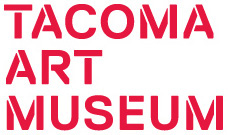Kobayashi Kiyochika
Kiyochika was the son of a minor government official. He studied Japanese painting as well as European-style oil painting. He was heavily influenced by Western art and techniques. He not only explored the new world of color introduced by aniline dyes, but also delved into studies of light and shadow in his prints. As magazines and newspapers gained popularity during the Meiji Period, Kiyochika illustrated current events and military campaigns. In 1894, he opened his own school. He worked right up until his death in 1915.
Publishing his first work in 1876, Kiyochika’s prints would come to reflect the changing landscape of the Meiji Period, the shift from the floating world of Edo to a modern Tokyo. These works reflect the influx of Western technologies, evidenced by clock towers, railroads and horse-drawn carriages. He also completed numerous illustrations and sketches of the Sino-Japanese War of 1894-1895. These prints of the 1880s and 1890s emphasize the military prowess that defined Japan’s new nationalism. The genre of senso-e (war prints) became popular, fitting into the imperial slogan of Bunmei Kaika. Meaning “Civilization and Enlightenment,” this policy emphasized military might and booming industry as the key characteristics of a modern nation.
source: roningallery.com
[Accessed August 2022]

